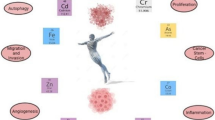Abstract
To investigate the contribution of cigarette smoking to the levels of N-methylvaline and N-hydroxyethylvaline in hemoglobin we analyzed samples from 32 smokers and 37 nonsmokers. The average background levels of the nonsmoking individuals were determined to be 1175 ± 176 pmol N-methylvaline/g globin, ranging from 722 to 1516 pmol/g globin, and 46 ± 12 pmol N-hydroxyethylvaline/g globin, ranging from 19 to 64 pmol/g globin. A significant correlation (P < 0.001) was found between both amino acids and the amount of cigarettes smoked per day, with an increase of 42 pmol N-methylvaline/g globin/cigarette per day and 11 pmol N-hydroxyethylvaline/g globin/cigarette per day. No influence of age, sex, and occupational exposure was observed. Furthermore, the levels of N-hydroxyethylvaline and N-methylvaline correlated for smokers but not for nonsmokers, indicating cigarette smoking as a common source for both adducts. To our knowledge, this is the first time N-methylvaline levels are reported to differ significantly between smokers and nonsmokers in the general population. Especially the analysis of N-methylvaline following low-level exposures to methylating agents should therefore take into consideration the influence of individual smoking habits. Additionally, the results of our study confirm the reliability of N-hydroxyethylvaline as an indicator of individual cigarette consumption. We successfully applied a new calibration technique to the analysis of N-hydroxyethylvaline, introducing a commercially available and well-defined dipeptide standard. The observed levels of N-hydroxyethylvaline in the samples are in line with those reported in the literature and verify the applicability of our calibration method.
Similar content being viewed by others
References
Bader M, Angerer J (1994) Strategies for the biological monitoring of benzene exposure by the GC/MS determination of protein adducts. 2nd European Workshop on Mass Spectrometry in Occupational Health, Les Diablerets, Switzerland, June 16–18
Bailey E, Brooks AGF, Dollery CT, Farmer PB, Passingham BJ, Sleightholm MA, Yates DW (1988) Hydroxyethylvaline adduct formation in haemoglobin as a biological monitor of cigarette smoke intake. Arch Toxicol62:247–253
Christakopoulos A, Bergmark E, Zorcec V, Norppa H, Mäki-Paakkanen J, Osterman-Golkar S (1993) Monitoring occupational exposure to styrene from hemoglobin adducts and metabolites in blood. Scand J Work Environ Health 19:255–263
Day BW, Naylor S, Gan LS, Sahali Y, Nguyen TT (1991) Gas chromatographic- mass spectrometric analysis of diols and tetrols from reactions of polycyclic aromatic hydrocarbon epoxides with hemoglobin. J Chromatogr Biomed Appl 562:563–571
DIN (1991) Chemical analysis. Detection limit, identification limit and determination limit (DIN 32645 E). Deutsches Institut für Normung e.V. Beuth, Berlin
Ehrenberg L, Osterman-Golkar S (1980) Alkylation of macromolecules for detecting mutagenic agents. Teratogen Carcinogen Mutagen 1:105–127
Garner RC (1985) Assessment of carcinogen exposure in man. Carcinogenesis 6:1071–1078
Kautiainen A, Törngvist M (1991) Monitoring exposure to simple epoxides and alkenes through gas chromatographic determination of hemoglobin adducts. Int Arch Occup Environ Health 63:27–31
Letzel S, Holz O, Drexler H, Weber A, Angerer J, Weltle J, Rüdiger HW, Sladeczek F, Lehnert G (1993) Untersuchung zur Objektivierung und Quantifizierung einer beruflichen 1,3-Butadien-Belastung. In: Triebig G, Stelzer O (eds) Verhandlungen der Deutschen Gesellschaft für Arbeits- und Umweltmedizin e.V. Gentner, Stuttgart, pp 629–633
Lewalter J, Ellrich D, Müller G, Norpoth K (1993) Der N-Alkyl-Valin-Gehalt im Globin des Erythrocyten als Bio-Marker der Belastungen durch Alkylantien. In: Triebig G, Stelzer O (eds) Verhandlungen der Deutschen Gesellschaft für Arbeitsmedizin und Umweltmedizine e.V. Gentner, Stuttgart, pp 437–443
Mowrer J, Törngvist M, Jensen S, Ehrenberg L (1986) Modified Edman degradation applied to hemoglobin for monitoring occupational exposure to alkylating agents. Toxicol Environ Chem 11:215–231
Neumann HG (1988) Neue Wege der Expositionskontrolle bei krebserzeugenden Substanzen. ErgoMed 2:26–31
Osterman-Golkar S, Kautiainen A, Bergmark E, Håkansson, Mäki-Paakkanen J (1991) Hemoglobin adducts and urinary mercapturic acids in rats as biological indicators of butadiene exposure. Chem Biol Interact 80:291–302
Sabbioni G (1992) Hemoglobin binding of monocyclic aromatic amines: molecular dosimetry and quantitative structure activity relationships for the N-oxidation. Chem Biol Interact 81:91–117
Sarto F, Torngvist M, Tomanin R, Bartolucci GB, Osterman-Golkar S, Ehrenberg L (1991) Studies of biological and chemical monitoring of low-level exposure to ethylene oxide. Scand J Work Environ Health 17:60–64
Skipper PL, Tannenbaum SR (1990) Protein adducts in the molecular dosimetry of chemical carcinogens. Carcinogenesis 11:507–518
Skipper PL, Peng X, Soohoo CK, Tannenbaum SR (1994) Protein adducts as biomarkers of human carcinogen exposure. Drug Metab Rev 26:111–124
Törnqvist M (1991) The N-alkyl Edman method for haemoglobin adduct measurement: updating and applications to humans. In: Garner RC, Farmer PB, Steel GT, Wright AS (eds) Human carcinogen exposure: biomonitoring and risk assessment. Oxford University Press, Oxford, pp 411–419
Törnqvist M, Mowrer J, Jensen S, Ehrenberg L (1986a) Monitoring of environmental cancer initiators through hemoglobin adducts by a modified Edman degradation method. Anal Biochem 154:255–266
Törnqvist M, Osterman-Golkar S, Kautiainen A, Jensen S, Farmer PB, Ehrenberg L (1986b) Tissue doses of ethylene oxide in cigarette smokers determined from adduct levels in hemoglobin. Carcinogenesis 7:1519–1521
Törnqvist M, Osterman-Golkar S, Kautiainen A, Näslund M, Calleman CJ, Ehrenberg L (1988a) Methylations in human hemoglobin. Mutat Res 204:521–529
Törnqvist M, Kautiainen A, Gatz RN, Ehrenberg L (1988b) Hemoglobin adducts in animals exposed to gasoline and diesel exhausts. 1. Alkenes. J Appl Toxicol 8:159–170
Törnqvist M, Svartengren M, Ericsson CH (1992a) Methylations in hemoglobin from monozygotic twins discordant for cigarette smoking: hereditary and tobacco-related factors. Chem Biol Interact 82:91–98
Törnqvist M, Magnusson AL, Farmer PB, Tang YS, Jeffrey AM, Wazneh L, Beulink GDT, van der Waal H, van Sittert NJ (1992b) Ring test for low levels of N-(2-hydroxyethyl)valine in human hemoglobin. Anal Biochem 203:357–360
Author information
Authors and Affiliations
Rights and permissions
About this article
Cite this article
Bader, M., Lewalter, J. & Angerer, J. Analysis of N-alkylated amino acids in human hemoglobin: evidence for elevated N-methylvaline levels in smokers. Int. Arch Occup Environ Heath 67, 237–242 (1995). https://doi.org/10.1007/BF00409405
Received:
Accepted:
Issue Date:
DOI: https://doi.org/10.1007/BF00409405




